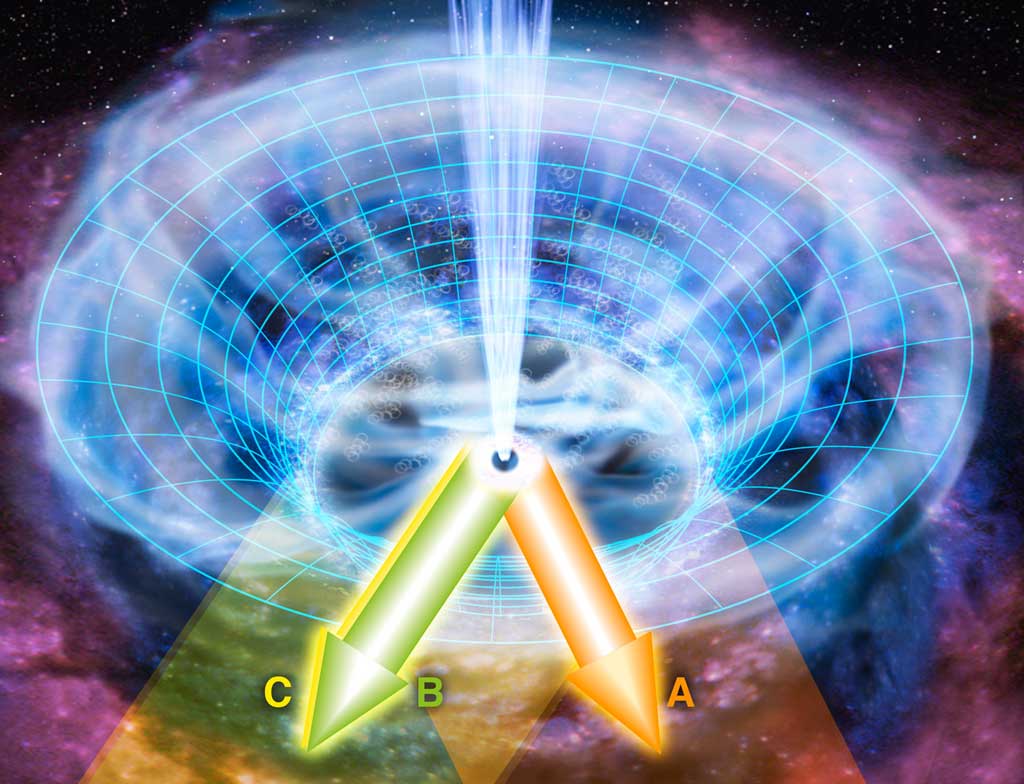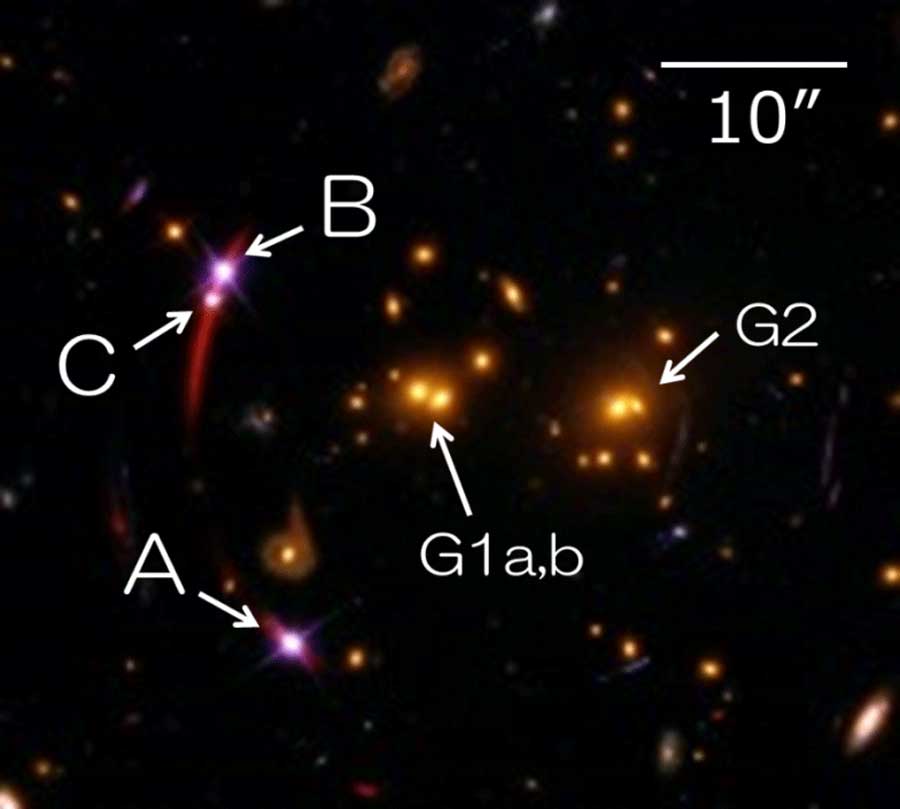Quasars are bright central regions of some distant galaxies. Their luminosities are often hundreds of times greater than those of their host galaxies. Scientists believe that their light source is a bright gaseous disk surrounding a supermassive black hole at the center of the galaxy. Gas streams called “outflows” move outward from the disk and have a substantial influence on surrounding interstellar–intergalactic regions. However, because quasars at large distances look like mere stars, their internal structures are not easy to investigate.
The team used the large light-gathering power of the 8.2-meter Subaru Telescope mounted with its High Dispersion Spectrograph (HDS) to observe the quasar SDSS J1029+2623 (J1029) and examine its structure. This quasar is about 10 billion light-years distant from Earth toward the constellation Leo, and a massive cluster of galaxies about 5 billion light-years away lies between the quasar and Earth. Because astronomical objects are usually extremely distant, they are difficult to study from different angles. Nevertheless, gravitational lensing opens up this possibility.
The team used the Subaru Telescope’s HDS to perform spectroscopic observations of the brightest two images A and B, and their results supported their hypothesis. Any absorber between the quasar and Earth provides absorption features in the spectra of the quasar images. While most absorption features originate from foreground objects that are physically unrelated to the quasar, some show clear evidence of origins from the outflow, such as partial coverage by clouds. Those features show a clear difference between images, A and B, although they are generally similar. This result supports the idea that the sight lines are going through different areas of the outflow from different directions. When viewed through one eye alone, an object appears to be 2-D, but viewing with both eyes yields a 3-D image that provides multidirectional information. This process is analogous to what occurred in the observations.
It is surprising that the absorption profiles arising in the outflow show clear differences between them, despite the small separation angle of about 22.5 arc seconds. “The outflow may not necessarily be homogeneous, but could instead have a complex internal structure with a number of clumpy gas clouds like cirrocumulus clouds in Earth’s atmosphere,” said Misawa. “The team plans to observe the area in image C in more detail.” Direct observation of a clumpy structure in tandem with theoretical analysis will contribute to revealing the mysterious formation history of these outflows.
The team also has explored other explanations for the outflows. Because the light paths of images A and B are different, they have a substantial time difference between them when they reach Earth. If the internal structure of the outflow varies with time, the two images deliver information about different epochs even if they pass through the same region of the outflow. The astronomers intend to conduct observations with the Subaru Telescope in March 2013 to test the “time-variation” scenario.











